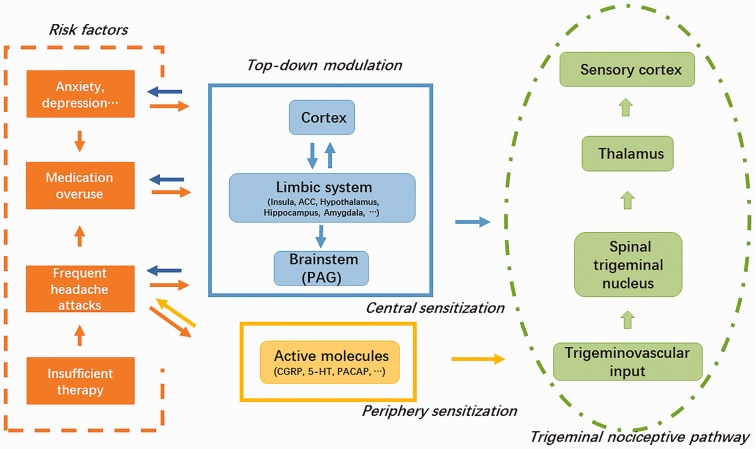Figure 1.
The proposed pathophysiological process of chronic migraine (CM). Both recurring headache attacks and other risk factors for migraine transformation (medication-overuse, anxiety, and depression) promote the derangement of top-down pain modulation and also atypical release of nociceptive molecules, which aggravates trigeminal sensitization induced by repeated nociceptive inputs. With this hypersensitive state, the episodic migraine finally progresses to a “never-ending” condition, namely, CM. To be noted, the neural plasticity induced by the risk factors of CM may influences themselves in turn. ACC: anterior cingulate cortex; PAG: periaqueductal gray; CGRP: calcitonin gene-related peptide; 5-HT: serotonin; PACAP: pituitary adenylate cyclase activating polypeptide.

